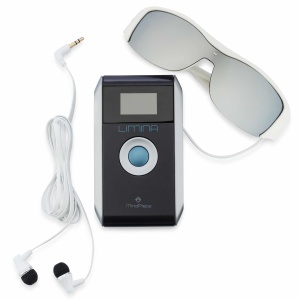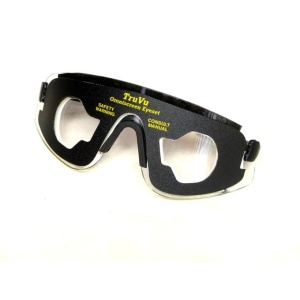Light Glasses for Light and Sound Mind Machines
Light Glasses for Light and Sound Mind Machines
Light Glasses for Light and Sound Mind Machines
Showing all 2 results
CATEGORIES
The stimulation glasses used in light/sound systems are usually like normal sunglasses, with some sort of light source mounted in front of the eyes. This page discusses the various choices available in light/sound glasses.
Physical stuff: The glasses should be light and should fit you comfortably. The cord to the electronics unit should be long enough that you can lean back in a chair without pulling the system off the table. A very flexible cord is nice. Many glasses have the internal electronics riveted to the glasses. A single rivet in the center, the weakest point of the glasses, leads to early breakage. Our glasses use two rivets offset from the center, avoiding the weak spot. Light source: Two kinds of light sources are used in making light glasses, LEDs (light emitting diodes) and incandescent bulbs (special flashlight bulbs). We make the our glasses with LEDs. Enclosed is information on both light sources, however.
Incandescent lights glasses Incandescent bulbs give broad spectrum light (tending toward yellow), but have the disadvantage that they involve heat, so they cannot turn off and on quickly. Their switching performance degrades rapidly above 15 Hertz or so. Incandescent bulb glasses are usually made with a translucent shield over the bulbs, allowing the glasses to be used with the eyes open. Incandescent glasses do not have a polarity.
LED glasses Until the late 1990’s, LEDs were always monochromatic, with red and green the most common colors and yellow and orange as options. Red LEDs are the brightest, and while the eye is most sensitive in the orange/yellow part of the spectrum red seems to give stronger stimulation. Some people find red harsh, even with the intensity turned down, and as a result prefer green. Some manufacturers have mixed LED colors in an effort to approximate broad spectrum light. All LED based light frames are designed to be used with the eyes closed — the eyelids diffuse the light and add to the experience, unless otherwise specified.


